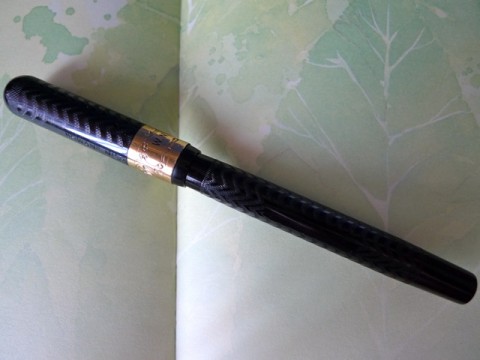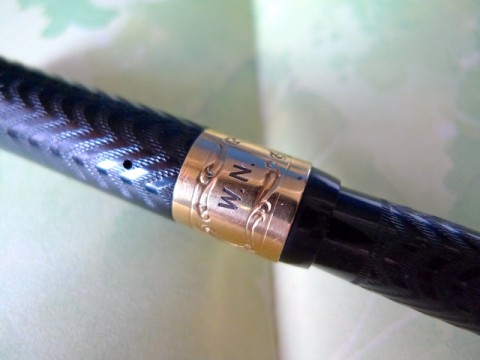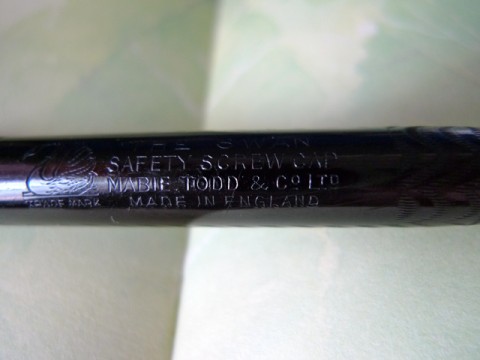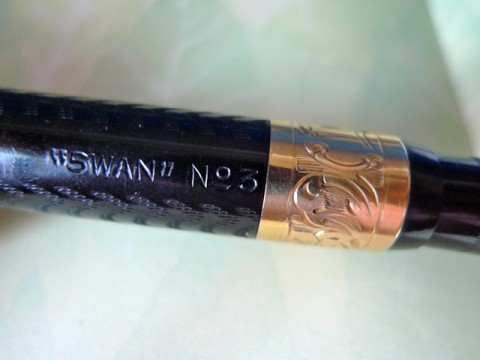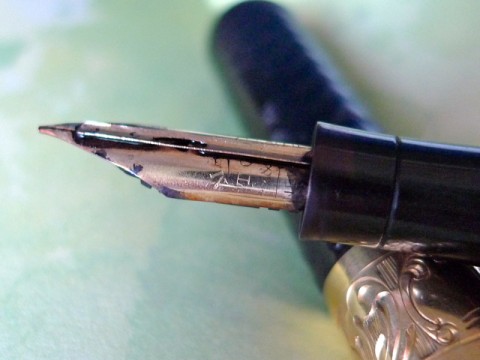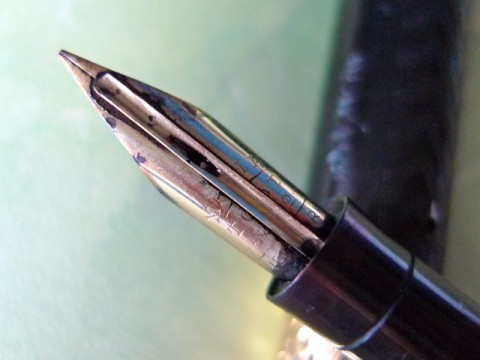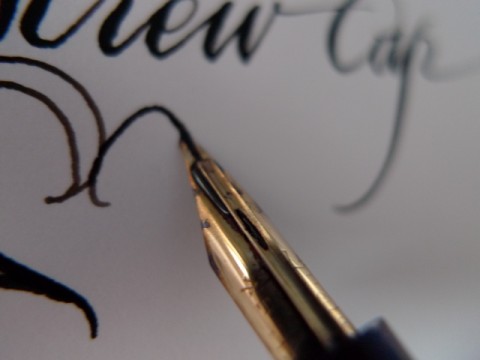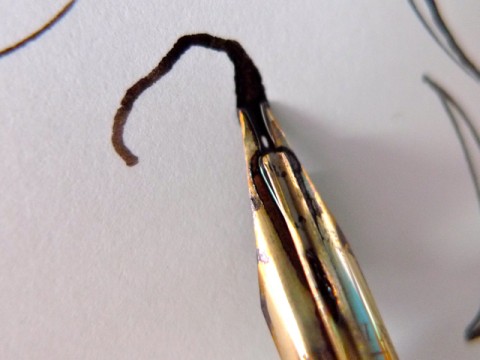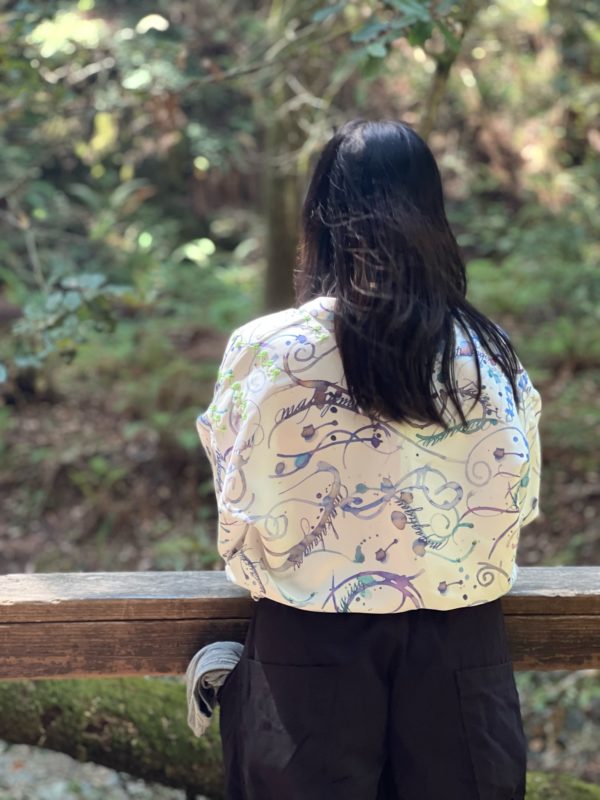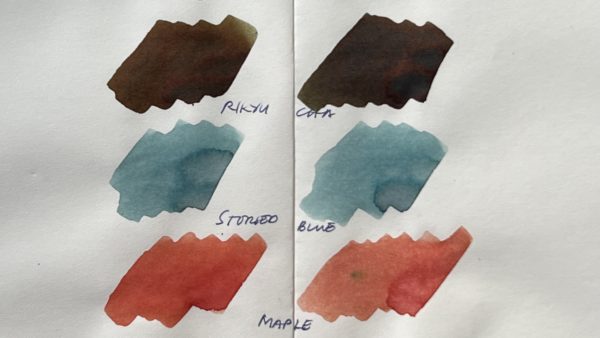That’s what I call it. I wonder if it has an official name.
The original owner’s initials are engraved on the cap band. I’ve taken to calling this the “Why Not” pen as a result.
The imprint on the barrel is fairly strong. I don’t think W.N. used this pen much. Why not? I have no idea. “Safety screw cap” means – I believe – that unlike unthreaded caps, screw caps allow for gradual release of pressure, so no nasty ink surprises when a cap is pulled off.
There’s also an imprint on the cap.
And another on the feed. Mabie Todd was apparently huge on brand building, and stamped “Swan” onto every part of the pen that could be mistaken for a part from another pen. (So what about those quotation marks? Were they for emphasis? In today’s usage, quotes behave like an aura of irony around a word. To wit: They’re “dating.” She’s “interesting.” He’s “enthusiastic.”)
On to the nib. (Which is also branded Mabie Todd Swan). The beautiful metal overfeed makes sure the nib never runs dry. Here, you can see the ink pooled under the overfeed, ready to be commanded by gravity and capillary action.
Here’s what the overfeed looks like from the top.
Caloy asked me if the overfeed restricted how the tines behaved during a downstroke. It doesn’t seem to.
I dropped Pilot yama-guri ink into the barrel and the pen just wrote by itself.
Early Swan nibs are almost always generously flexy, and this is no exception. It’s already in regular use.
